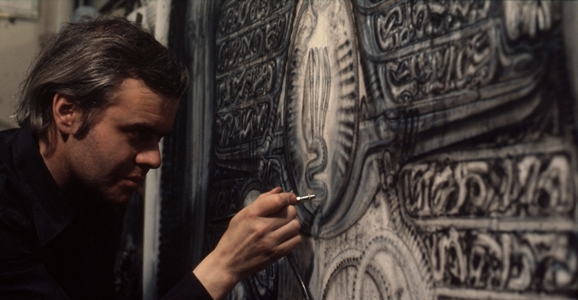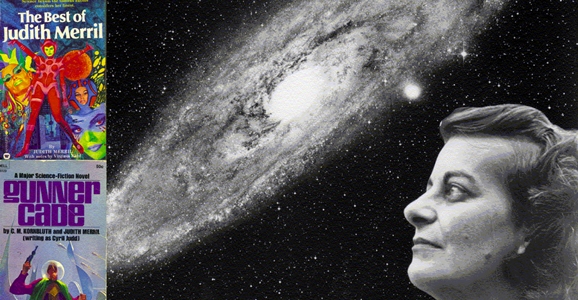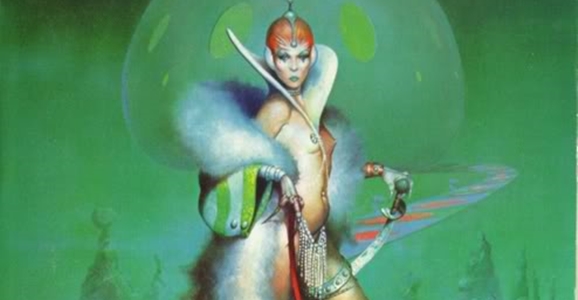Science Fiction Hall Of Fame Inducts David Bowie, H.R. Giger, Judith Merril, And Joanna Russ
This article is more than 2 years old
What do H.R. Giger, David Bowie, and J.R.R. Tolkien have in common? If they’re your answers to the “Screw/Marry/Kill” game, I beg you not to share any further details. At any rate, those three very different, very talented gentlemen are among this year’s inductees to the Science Fiction and Fantasy Hall of Fame.
The Science Fiction and Fantasy Hall of Fame was founded in 1996. Initially based at the Gunn Center for the Study of Science Fiction and Fantasy at the University of Kansas, it later relocated to its current home, Seattle’s EMP Museum. The organization seeks to honor “the lives, work, and ongoing legacies of the genres greatest creators.” In addition to the three gents listed up above, this year’s inductees also include science fiction writer/editor Judith Merril, and writer/critic Joanna Russ. We’ll take a look at the four science fiction inductees below (Also J.R.R. Tolkien, but he doesn’t really fall under the GFR science/science fiction umbrella.)
 David Bowie (1947 – )
David Bowie (1947 – )
I was born too late to experience David Bowie’s mingling of science fictional elements with his music in songs such as 1969’s “Space Oddity” and his whole “Ziggy Stardust” alien alter ego. I’d certainly heard “Ground Control to Major Tom” enough over the years, but I had no idea the BBC has made his “Space Oddity” a sort of unofficial anthem during their coverage of the Apollo 11 mission. Bowie’s “Life on Mars,” in addition to being damn catchy, served as the narrative launching point for the excellent British series called, well, Life on Mars. He also played an androgynous alien visitor in the 1976 film The Man Who Fell to Earth, based on the novel by Walter Tevis. (But he’ll always be the Goblin King to me.)
 H.R. Giger (1940 – )
H.R. Giger (1940 – )
It’s hard for me to conceive of any science fiction fans who don’t know the name H.R. Giger, since the Swiss artist’s work helped given birth to one of the most iconic film series of all time. Giger’s 1977 book Necronomicon caught the eye of director Ridley Scott, who enlisted Giger to help design the titular creature at the heart of the movie Alien. His unmistakable art blends elements of the biological, the mechanical, and the fetishized sexual, and who knows if Alien would have been nearly as successful without his unsettlingly phallic creature invading the collective nightmares of a generation.
 Judith Merril (1923 – 1997)
Judith Merril (1923 – 1997)
Unfortunately, I’m not nearly as familiar with the two females on this year’s Hall of Fame list. I should probably remedy that, since they’re obviously talented enough to merit this honor. Merril got her start writing for the pulp magazines in the 1940s, primarily Western and sports stories, before publishing her first science fiction story, “That Only a Mother,” in 1948. That one involved nuclear war and the aftermath thereof, a theme she revisited in her 1950 novel about World War III, Shadow on the Hearth. In spite of finding no small success in the genre, in the 1960s she set aside writing fiction and instead became a prolific editor. She edited The Year’s Best Science Fiction for over a decade, from 1956 – 1968. She also helped found the Milford Conference writers’ workshop, which eventually evolved into the Science Fiction Writers’ Association. That organization named her an “author emeritus” in 1997.
 Joanna Russ (1937 – 2011)
Joanna Russ (1937 – 2011)
Russ’ career saw her work extensively as both a critic and a writer of science fiction and fantasy. She got nominated for a Nebula Award on her very first novel, 1968’s Picnic on Paradise. That’s a doubly impressive debut considering how much the SF field was dominated by men at the time. Her 1975 novel The Female Man (pictured above) examined the concept of parallel universes, telling stories about multiple incarnations of the same woman across four different realities. The book landed her a retroactive James Tiptree, Jr. Award in 1996. She also earned awards for her shorter fiction: she nabbed a 1983 Hugo Award for her story “Souls,” and she followed up her 1968 Nebula nomination in 1972, taking home the actual award for a story dubbed “When It Changed.”












